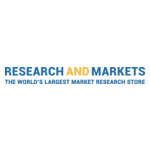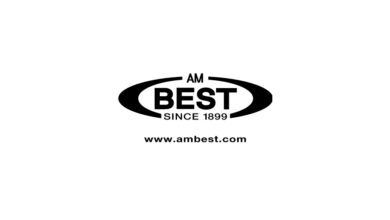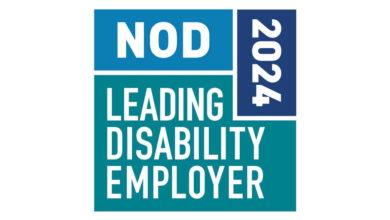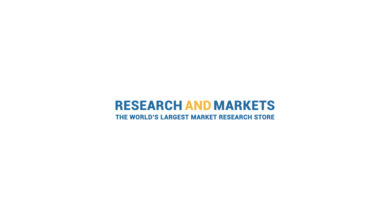Biosimilar Market in Europe (2021 to 2026) – Industry Trends, Share, Size, Growth, Opportunity and Forecasts – ResearchAndMarkets.com

DUBLIN–(BUSINESS WIRE)–The “Biosimilar Market in Europe: Industry Trends, Share, Size, Growth, Opportunity and Forecast 2021-2026” report has been added to ResearchAndMarkets.com’s offering.
The biosimilar market in Europe reached a value of US$ 5,341 Million in 2020.
Companies Mentioned
- Novartis
- Pfizer
- Teva
- Celltrion
- Samsung Bioepis
- Amgen
- Apotex
- Ratiopharm
- Mylan
- Merck Sharp & Dohme
- Eli Lilly
- Accord Healthcare Ltd
- Boehringer
- Ingelheim
- Hexal Ag
- Stada Arzneimittel Ag
The European biosimilar market represents the most mature in the world and continues to rally momentum. This market is expected to grow robustly in the next five years, as a number blockbuster biologics are scheduled to lose patent protection in Europe. Looking forward, the publisher expects the biosimilar market in Europe to exhibit strong growth during the next five years.
Biosimilars are biotherapeutic products which are similar to already licensed reference biologics, in terms of quality, safety and efficiency. Biosimilar manufacturers wait till the patent of the reference product expires and then seek approval from the regulatory authorities in order to produce their biosimilar versions.
These manufacturers use the state-of-the-art technology for comparing the characteristics, such as purity, chemical identity and bioactivity, of the proposed biosimilar to its reference product. In 2005, a science-based regulatory framework was established in the European Union (EU) for ensuring the production of high-quality biosimilars. Later in 2006, the European Medicines Agency (EMA) approved the first biosimilar medicine, Omnitrope. Since then, a number of biosimilars belonging to various therapeutic classes have been approved in Europe.
The European population is ageing with around one fifth of the total EU population above 65 years of age. There has resulted in a significant increase in the burden of lifestyle diseases in the region. The prevalence of diseases such as diabetes, autoimmune diseases, oncology, etc. has been increasing rapidly in Europe. This is also expected to propel the market growth during the next few years.
As a result of rising healthcare costs, governments across a number of European countries have formulated policies incentivising physicians, pharmacists and patients in favour of biosimilars over branded biologics.
Key Topics Covered:
1 Preface
2 Scope and Methodology
3 Executive Summary
4 Europe Biosimilars Market – Introduction
4.1 Overview
4.2 WHO and EMA Terminology on Biosimilars
4.3 Biosimilars and Generics
4.4 Biosimilars and Branded Biological Products
5 Europe Biosimilars Market
5.1 Market Overview
5.2 Historical and Current Market Trends
5.3 Impact of COVID-19
5.4 Market Breakup by Country
5.5 Market Breakup by Molecule
5.6 Market Breakup by Indication
5.7 Market Breakup by Manufacturing Type
5.8 Patent Landscape
5.9 Market Forecast
6 Market Breakup by Country
6.1 Italy
6.1.1 Market Performance
6.1.2 Key Players and Biosimilars
6.1.3 Market Forecast
6.2 Germany
6.2.1 Market Performance
6.2.2 Key Players and Biosimilars
6.2.3 Market Forecast
6.3 France
6.3.1 Market Performance
6.3.2 Key Players and Biosimilars
6.3.3 Market Forecast
6.4 United Kingdom
6.4.1 Market Performance
6.4.2 Key Players and Biosimilars
6.4.3 Market Forecast
6.5 Spain
6.5.1 Market Performance
6.5.2 Key Players and Biosimilars
6.5.3 Market Forecast
6.6 Rest of Europe
6.6.1 Market Performance
6.6.2 Market Forecast
7 Market Breakup by Molecule
7.1 Infliximab
7.2 Insulin Glargine
7.3 Epoetin Alfa
7.4 Etanercept
7.5 Filgrastim
7.6 Somatropin
7.7 Rituximab
7.8 Follitropin Alfa
7.9 Adalimumab
8 Market Breakup by Manufacturing Type
8.1 In-house Manufacturing
8.1.1 Market Trends
8.1.2 Market Forecast
8.2 Contract Manufacturing
8.2.1 Market Trends
8.2.2 Market Forecast
9 Market Breakup by Indication
9.1 Auto-Immune Diseases
9.2 Blood Disorder
9.3 Diabetes
9.4 Oncology
9.5 Growth Deficiency
9.6 Female Infertility
10 European Biosimilar Market: SWOT Analysis
10.1 Overview
10.2 Strengths
10.3 Weaknesses
10.4 Opportunities
10.5 Threats
11 European Biosimilar Market: Value Chain Analysis
11.1 Characterizing the Existing Innovator Drug
11.2 Research and Development
11.2.1 Characterization of Biosimilars
11.2.2 Developing a Unique Cell Line
11.3 Product Development
11.3.1 Pre-Testing
11.3.2 Intermediary Clinical Testing (PK/PD)
11.3.3 Confirmatory Clinical Phase-III
11.4 Final Product Formulation
11.5 Marketing and Distribution
12 Porter’s Five Forces Analysis
12.1 Overview
12.2 Bargaining Power of Buyers
12.3 Bargaining Power of Suppliers
12.4 Degree of Competition
12.5 Threat of New Entrants
12.6 Threat of Substitutes
13 Price Analysis
13.1 Key Price Indicators
13.2 Price Trends
14 Requirements for Setting Up a Generic Drug Manufacturing Plant
14.1 Manufacturing Process
14.2 Raw Material Requirements
14.3 Raw Material Pictures
14.4 Land and Construction Requirements
14.5 Machinery and Infrastructure Requirements
14.6 Machinery Pictures
14.7 Plant Layout
14.8 Packaging Requirements
14.9 Utility Requirements
14.10 Manpower Requirements
15 Competitive Landscape
15.1 Market Structure
15.2 Key Players
15.3 Profiles of Key Players
For more information about this report visit https://www.researchandmarkets.com/r/q38uzq
Contacts
ResearchAndMarkets.com
Laura Wood, Senior Press Manager
[email protected]
For E.S.T Office Hours Call 1-917-300-0470
For U.S./CAN Toll Free Call 1-800-526-8630
For GMT Office Hours Call +353-1-416-8900



